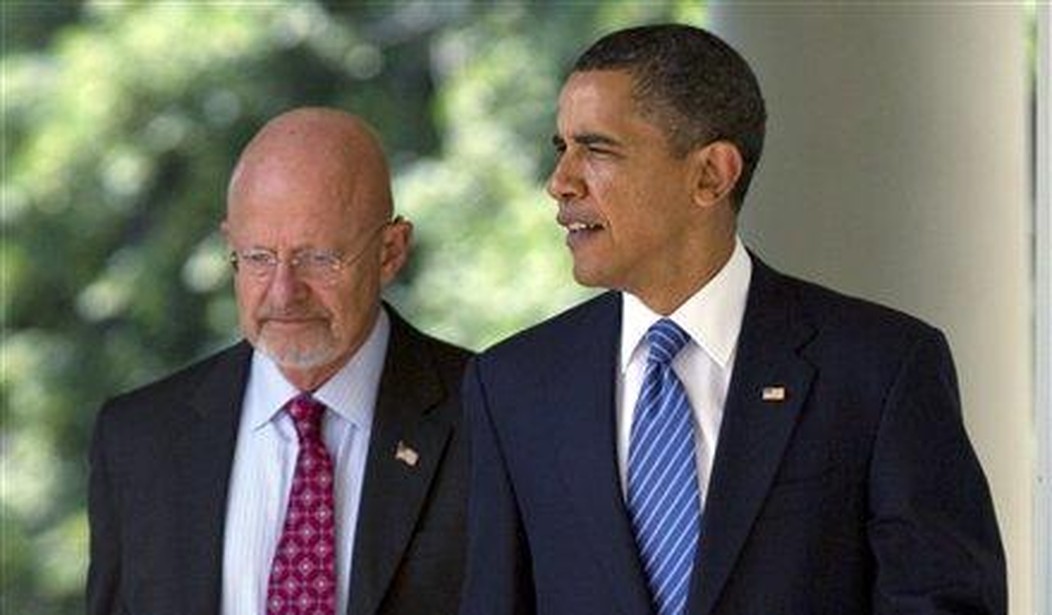Earlier this week, the Washington Post shook up the world by reporting that the Defense Intelligence Agency had concluded that North Korea had “successfully produced a miniaturized nuclear warhead that can fit inside its missiles.” The report changed the public calculus on the standoff with the Kim regime, and touched off a war of words between Washington and Pyongyang. However, as Fred Fleitz wrote last night at Fox News, the Post’s story also left out a salient bit of history. The DIA concluded at least four years ago that North Korea had crossed the supposed technological obstacle of miniaturization, and the real emerging threat was the ICBM rather than the warhead (via PJM’s Debra Heine):
Tuesday’s bombshell Washington Post story that the Defense Intelligence Agency (DIA) has determined North Korea is capable of constructing miniaturized nuclear weapons that could be used as warheads for missiles – possibly ICBMs – left out a crucial fact: DIA actually concluded this in 2013. The Post also failed to mention that the Obama administration tried to downplay and discredit this report at the time.
During an April 11, 2013, House Armed Services Committee hearing, Congressman Doug Lamborn, R-Colo., inadvertently revealed several unclassified sentences from a DIA report that said DIA had determined with “moderate confidence” that North Korea has the capability to make a nuclear weapon small enough to be launched with a ballistic missile.
The Director of National Intelligence and Obama officials subsequently tried to dismiss Lamborn’s disclosure by claiming the DIA assessment was an outlier that did not reflect the views of the rest of the U.S. Intelligence Community.
Interestingly, the Obama administration didn’t exactly deny this at the time. Then-Director of National Intelligence James Clapper downplayed it instead, claiming that the DIA’s conclusion didn’t fit within the consensus intel view:
After the conclusion became public at a Congressional hearing last week, the official, James R. Clapper Jr., the director of national intelligence, issued a statement saying that the position by the Defense Intelligence Agency did not reflect the consensus view of the 15 other intelligence agencies.
But Mr. Clapper, in testimony to the Senate Armed Services Committee, offered new details and a fuller explanation of why the D.I.A.’s conclusion last month — with “moderate confidence” — that North Korea has learned how to shrink a nuclear weapon to fit into a nuclear warhead was at odds with all the other intelligence agencies.
“The difference has to do with the confidence level in the actual ability of the North Koreans to make a weapon that will work in a missile,” Mr. Clapper, said, adding that since the North has yet to test such a weapon, “neither we nor the North Koreans know whether they have such capability.”
Clapper made another key point at the time, which was that Pyongyang had “not yet demonstrated the full range of capabilities necessary for a nuclear armed missile,” which was certainly true for missiles that could hit the continental US. Barack Obama, on the other hand, insisted that North Korea simply couldn’t produce the warheads yet:
President Obama said in an interview broadcast on Tuesday that he did not believe that North Korea yet had the ability to make a nuclear weapon small enough to fit atop a missile.
Supposedly, the issue was miniaturization of the warhead, which was a key point often raised by the Obama administration in arguing that North Korea’s nuclear program was not an imminent threat. Former CIA Director James Woolsey and Congressional advisor Dr. Peter Pry insisted over a year ago that the miniaturization threshold was a myth, and that the ICBM threshold had already been overcome:
The microelectronics revolution solved most technological challenges of warhead miniaturization long ago for North Korea and for all nuclear missile aspirants.
A nuclear missile warhead also needs shock absorbers to soften forces of acceleration during launching and deceleration when re-entering the atmosphere. A heat shield to penetrate the atmosphere, in order to blast a city, is also necessary — these are technologically simple and within North Korea’s capability.
Indeed, in 2013, a publicity photo by state media of North Korea’s KSM-3 satellite interior shows a shock absorber cage, allegedly for an earth observation camera but suitable for a small nuclear weapon. North Korea recently conducted another illegal missile test demonstrating a re-entry vehicle and heat shield.
Pry and Woolsey also noted (again in 2016) that the DIA reiterated its previous 2013 conclusion three years later:
However, defense and intelligence community officials warn North Korea probably already has nuclear armed missiles. The Defense Department’s 2016 report “Military and Security Developments Involving the Democratic People’s Republic of North Korea” warns that, in addition to medium-range missiles, they have six KN-08 mobile nuclear-armed intercontinental ballistic missiles (ICBMs) that can strike the U.S. mainland.
Recently, the Pentagon warned North Korea rolled out a new longer-range ICBM, the KN-14, that can probably deliver a nuclear warhead to Chicago.
So the notion that we don’t have to worry about North Korean nuclear missiles because they cannot “miniaturize” warheads is a myth. Adm. William Gortney, Commander of North American Aerospace Defense Command (NORAD) is correct to presume that is the case and to prepare to defend against that threat, as he said last October.
If the DIA reached the same conclusion in 2013 and 2016 that they did this week, why didn’t the media take as much notice of it then? The Obama administration, and Obama himself, seemed content to keep kicking the can down the road, perhaps hoping that quiet diplomacy with China and sanctions pressure would deter the Kim regime. The media appears to have followed their lead, rather than challenge those assumptions. Obama’s gamble has clearly backfired. That would explain why Trump has changed rhetorical tactics, at least, and now wants full pressure on China and North Korea rather than a strategy of passive-aggressive denial.
I interviewed Dr. Peter Pry Tuesday on Relevant Radio to discuss all this and more. The audio archive can be accessed here, although it’s not embeddable. Needless to say, Dr. Pry isn’t terribly optimistic about the options we have left in dealing with this crisis.







Join the conversation as a VIP Member